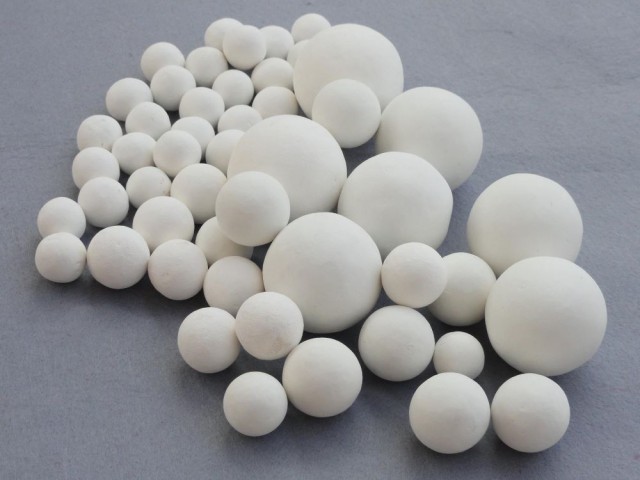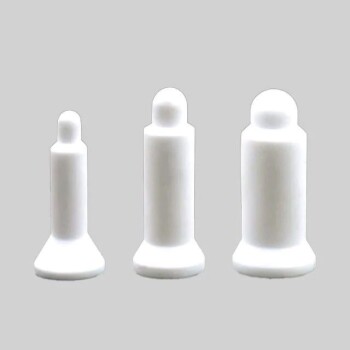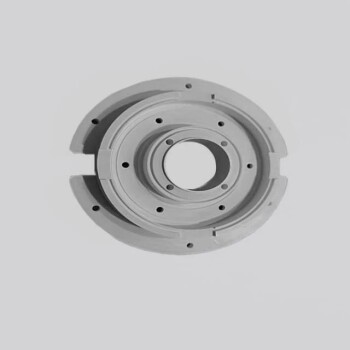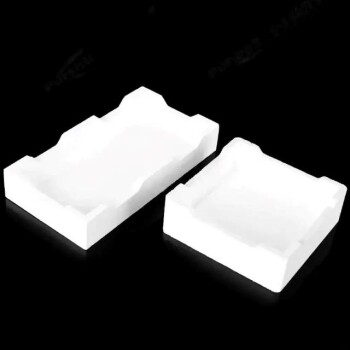Common Defects in Isostatically Pressed Ceramic Balls
Size and Shape Deviation
Ceramic balls may exhibit deviations in size or irregular shapes due to several factors, including the design of the mold, the fluidity of the material, and the control of molding pressure. These deviations can significantly impact the performance and quality of the ceramic balls.
Factors Influencing Size and Shape Deviation
- Mold Design: The precision and design of the mold play a crucial role. Any imperfections in the mold can lead to variations in the size and shape of the ceramic balls.
- Material Fluidity: The flow characteristics of the ceramic powder during molding can affect the uniformity of the final product. Poor fluidity can result in uneven filling of the mold, leading to deviations.
- Molding Pressure Control: Inadequate or uneven pressure during the molding process can cause the ceramic balls to deviate from their intended size and shape.
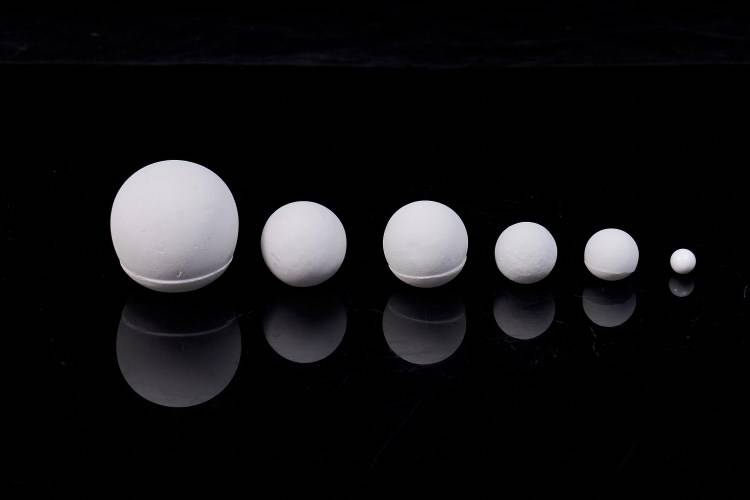
Solution Strategies
To mitigate these issues, several strategies can be employed:
- Improving Mold Accuracy: Enhancing the precision of the mold design can help reduce size and shape deviations. This involves using advanced manufacturing techniques to ensure the mold is as accurate as possible.
- Optimizing Molding Pressure Control: Fine-tuning the pressure applied during the molding process can help achieve a more uniform and consistent product. This may involve using automated systems to control pressure more precisely.
- Adjusting Material Fluidity: Modifying the properties of the ceramic powder to improve its fluidity can lead to better filling of the mold and, consequently, fewer deviations in the final product.
By addressing these factors and implementing the appropriate solutions, manufacturers can produce ceramic balls with minimal size and shape deviations, thereby improving overall product quality and performance.
Burrs and Flash
Burrs and flash on the edges of isostatically pressed ceramic balls are often the result of several interconnected factors, primarily stemming from the mold design, material fluidity, molding pressure control, and the demolding process. Mold design issues can lead to inconsistencies in the material flow, causing localized overfill or underfill, which in turn can result in the formation of burrs. Material fluidity, or the ability of the ceramic powder to flow smoothly through the mold, is crucial; inadequate fluidity can cause material to accumulate in certain areas, leading to burrs.
Molding pressure control is another critical factor. If the pressure is not uniformly applied, it can cause the material to compress unevenly, resulting in the protrusion of excess material. Additionally, the demolding process can exacerbate these issues if not executed with precision. Improper demolding techniques can cause the material to tear or stretch, further contributing to the development of burrs.
To mitigate these issues, several strategies can be employed. Improving mold precision is essential to ensure that the mold cavities are accurately shaped and sized, thereby reducing the likelihood of material accumulation. Optimizing pressure control during the molding process can help achieve a more uniform compression of the material, minimizing the formation of burrs. Furthermore, adjusting the demolding processes to ensure they are both gentle and precise can prevent additional material damage and reduce the occurrence of burrs.
| Factor | Description | Solution Strategy |
|---|---|---|
| Mold Design Issues | Inconsistencies in material flow due to mold design | Improve mold precision |
| Material Fluidity | Inadequate flow of ceramic powder through the mold | Optimize molding pressure control |
| Molding Pressure | Uneven application of pressure causing uneven compression | Adjust demolding processes |
| Demolding Process | Improper techniques causing material tear or stretch | Optimize pressure control |
By addressing these factors and implementing the suggested solutions, the incidence of burrs and flash on ceramic balls can be significantly reduced, leading to higher quality and more consistent products.
Internal Cracks and Pores
Internal defects such as cracks and pores in isostatically pressed ceramic balls are often the result of several key factors. These include the purity of the raw materials used, the pressure applied during the molding process, and the control of the sintering temperature. When raw materials are not sufficiently purified, they can introduce impurities that lead to the formation of internal cracks and pores. Similarly, inadequate molding pressure can result in incomplete densification, leaving voids within the ceramic structure. Additionally, improper sintering temperature control can cause thermal stresses that contribute to the development of these defects.
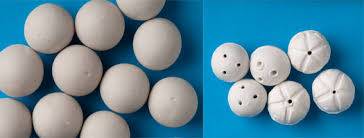
To mitigate these issues, several strategic measures can be implemented. Firstly, improving the purity of raw materials is crucial. This involves rigorous quality control measures to ensure that only high-purity materials are used in production. Secondly, optimizing the sintering process is essential. This includes precise temperature control and the use of advanced sintering techniques to ensure uniform densification without inducing thermal stresses. Lastly, strengthening quality inspection throughout the production process can help identify and address potential defects early, thereby preventing the occurrence of internal cracks and pores.
By addressing these factors and implementing the appropriate solution strategies, manufacturers can significantly reduce the incidence of internal defects in isostatically pressed ceramic balls, thereby enhancing their overall quality and performance.
Surface Defects
Surface defects, such as pits, scratches, and color spots, are common issues in isostatically pressed ceramic balls. These blemishes can arise from several sources, including impurities in the raw materials, damage to the mold surface, or the effects of mechanical vibrations during the manufacturing process.
Impurities in the raw materials can lead to the formation of pits and color spots on the ceramic surface. These impurities can be introduced during the sourcing of raw materials or through contamination in the production environment. Additionally, mechanical vibrations, which are often inherent in the manufacturing process, can cause scratches and other surface imperfections.
To mitigate these issues, several strategies can be employed. Firstly, protecting the mold surface is crucial. This can be achieved by using high-quality materials for the mold and ensuring that the mold is properly maintained and cleaned regularly. Secondly, improving the demolding process can help reduce the likelihood of surface defects. This might involve optimizing the timing and method of demolding to minimize the risk of damage to the ceramic surface.
Lastly, strengthening subsequent treatments, such as polishing and finishing, can help to rectify any surface defects that do occur. By implementing these solutions, manufacturers can significantly reduce the incidence of surface defects in isostatically pressed ceramic balls, thereby enhancing the overall quality and reliability of the final product.
Composition Segregation
Composition segregation during the sintering process significantly impacts the uniformity and performance stability of isostatically pressed ceramic balls. This phenomenon occurs when the constituent materials do not distribute evenly throughout the ceramic matrix, leading to localized variations in density and composition. Such inconsistencies can result in mechanical and thermal property disparities, compromising the overall reliability and efficiency of the ceramic balls.
To mitigate composition segregation, several strategic approaches can be employed:
-
Optimizing Raw Material Formula:
- Chemical Composition: Adjusting the chemical composition of the raw materials can help in achieving a more homogeneous distribution. This involves selecting materials with similar densities and thermal expansion coefficients to reduce the likelihood of segregation during sintering.
- Particle Size Distribution: Ensuring a narrow particle size distribution can also contribute to better mixing and, consequently, less segregation.
-
Enhancing Mixing Uniformity:
- Advanced Mixing Techniques: Utilizing high-shear mixers or ball mills can enhance the homogeneity of the powder mixture. These techniques ensure that the particles are uniformly dispersed and interact with each other more effectively.
- Mixing Time and Speed: Optimizing the mixing time and speed is crucial. Too short a mixing time can result in uneven distribution, while too long can lead to agglomeration and further segregation.
-
Improving Sintering Uniformity:
- Controlled Sintering Environment: Implementing a controlled atmosphere during sintering can help in maintaining uniform conditions across the ceramic matrix. This includes controlling temperature gradients, gas flow, and pressure.
- Gradual Heating and Cooling: Gradual heating and cooling cycles can prevent thermal shock and reduce the risk of segregation. This approach allows for a more uniform densification process.
| Strategy | Description |
|---|---|
| Optimizing Raw Material Formula | Adjust chemical composition and particle size distribution for homogeneity. |
| Enhancing Mixing Uniformity | Use advanced mixing techniques and optimize mixing time and speed. |
| Improving Sintering Uniformity | Implement controlled sintering environment and gradual heating/cooling. |
By addressing these aspects, the risk of composition segregation can be minimized, leading to more uniform and stable ceramic balls.
Uneven Density
Uneven density distribution in isostatically pressed ceramic balls can significantly impact their structural integrity and performance. This defect is often a result of uneven powder filling or inconsistent pressure distribution during the molding process. The consequences of such density variations can range from reduced mechanical strength to increased susceptibility to cracking and wear.
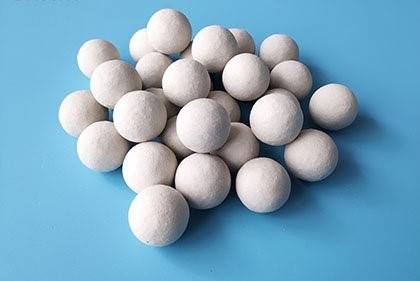
To mitigate this issue, several strategic measures can be implemented. Firstly, optimizing the molding process is crucial. This involves fine-tuning parameters such as powder compaction rates and pressure application techniques to ensure uniform density across the entire ceramic ball. Advanced simulation tools can be employed to model and predict optimal molding conditions, thereby reducing the likelihood of density variations.
Strengthening sintering control is another critical aspect. During the sintering phase, maintaining precise temperature and pressure profiles can help achieve a more uniform density distribution. Implementing automated control systems can enhance the consistency and reliability of the sintering process, minimizing the occurrence of uneven density.
Additionally, the use of advanced testing equipment plays a pivotal role in identifying and addressing density variations early in the production cycle. Non-destructive testing methods, such as X-ray computed tomography (CT) and ultrasonic testing, can provide detailed insights into the internal structure of the ceramic balls, allowing for the detection of density anomalies before they become problematic.
By integrating these solutions, manufacturers can significantly improve the quality and consistency of isostatically pressed ceramic balls, ensuring they meet stringent performance and reliability standards.
Related Products
- Precision Machined Zirconia Ceramic Ball for Engineering Advanced Fine Ceramics
- Isostatic Molding Pressing Molds for Lab
- Ball Press Mold for Lab
- Engineering Advanced Fine Alumina (Al₂O₃) Ceramic Positioning Pin Straight Bevel for Precision Applications
- Cold Isostatic Pressing Machine CIP for Small Workpiece Production 400Mpa
Related Articles
- A Guide to Choosing the Right Temperature for Warm Isostatic Press
- An In-depth Study of Isostatic Presses: Types, Applications, and Advantages
- Cold Isostatic Pressing for Medical Applications Challenges and Solutions
- Choosing the Best Material for Ball Mill: Essential Factors and Recommendations
- How to Achieve Uniform Pressure with Warm Isostatic Press
